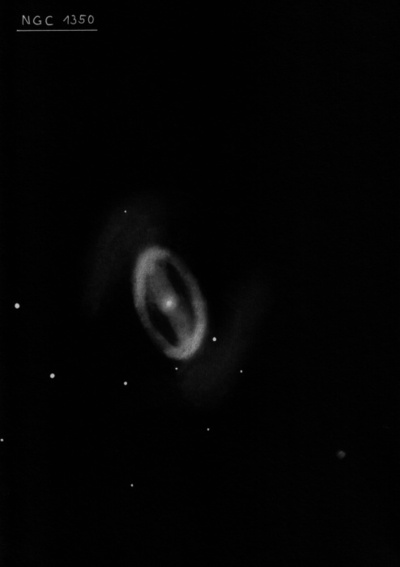
James Dunlop discovered NGC 1350 = D 591 = h2545 on 24 Nov 1826 with his 9" reflector from Parramatta, NSW and noted (single observation) "a very faint small ill-defined nebula." His position is 11' SE of ESO 358-013 = PGC 13059. John Herschel observed the galaxy in his sweep of 19 Oct 1835, logging "bright, large, much elongated, but with a round nucleus much brighter than the environing faint atmosphere. PD roughly taken. Transit missed, the observation having been lost by relying on the RA given by Mr. Dunlop's Catalog (3h 25m) which is too great. That here set down is assumed at random as probably nearer the truth." His approximate position was corrected by DeLisle Stewart in NGC Corrections, Harvard College Observatory and repeated in the IC 2 Notes.
Harold Knox-Shaw photographed the galaxy at the Helwan Observatory between 1909-11 with the 30" reflector and described an "oval ring with central star and traces of structure external to this in the form of either another ring or spiral arms".
200/250mm - 8" (10/13/81): fairly bright, moderately large, elongated 2:1 N-S, bright core.
400/500mm - 17.5" (11/26/94): bright, fairly large, elongated 3:2 N-S. The halo appears about 3'x2' although difficult determine the exact dimensions as the halo fades gradually into the background. Sharply concentrated with a very bright 20" round core and stellar nucleus. A very faint star is just west of the south extension and two mag 12 stars are 2.7' SE and 3.0' E of center. Located 6' SW of mag 7.2 SAO 194353. Fornax I cluster member.
Notes by Steve Gottlieb